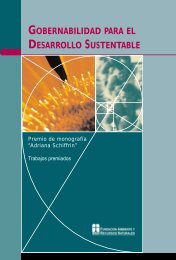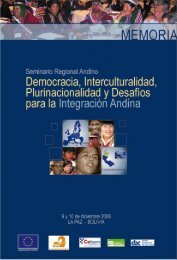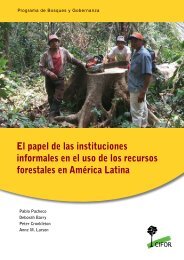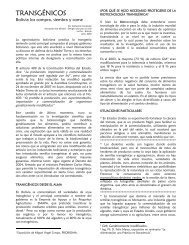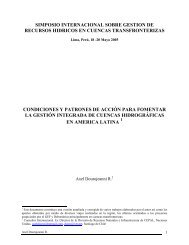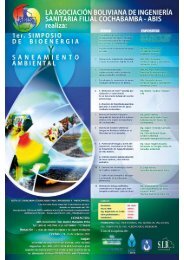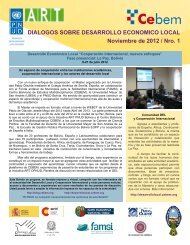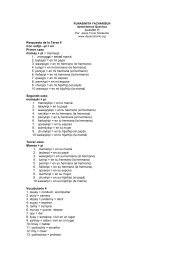You also want an ePaper? Increase the reach of your titles
YUMPU automatically turns print PDFs into web optimized ePapers that Google loves.
eturns from planning. Secondly, there is a chronic problem of capacity in planning which manifestsitself in the inadequate staffing of planners in the Council. This means that many illegal settlementsdevelop without planning and subsequent supervision. Furthermore, there is the problem ofweak legislation. Most of the legislation is obsolete rendering the enforcement of developmentcontrol very weak and ineffective.It is proposed that the City planning and environmental management focus at a tangential pointwhere maximum urban productivity is achieved with minimum environmental damage. Theproposed intervention strategy should be based within the existing framework of KCC. The aimis to provide a catalytic role and ensure substance for ongoing activities for environmentalmanagement in the City.C: DESCRIPTION OF THE CDS PROCESSThe coordination mechanisms in Kampala are evolving towards inclusive teams under theauspices of two chief officers – the Director of City Planning and the Director of Medical Services.The teams are addressing core issues related to the criteria for the community involvement andthe challenges facing informal settlements in Kampala.A Kampala Case Study was undertaken and documented in a City Profile. This profile providedinformation on the City’s background, its economic status in the national context, key urbanmanagement challenges, and ongoing initiatives. It identified the following as some of the keyurban issues facing Kampala:• Sanitation and drainage,• Waste management,• Income generation schemes,• Shelter.Two divisional level city consultations were held for Nakawa Division and Central Division. TheConsultations were well informed by the profiling and the issues presented. Slum Upgradingand Waste Management were prioritized for immediate action under the CDS. Committees forSlum Upgrading were then set up in each division. The committees established the criteria foranalyzing the slums that exist in the two divisions and selected one priority slum for upgradingin each division. These were Kagubuge in Central and Kinawataka in Nakawa division. SpecificAction and Investment Plans were then drawn for each of the two prioritized slums (see D:Strategic Action and Strategic Investment Plans below). The criteria used in choosing the slumstook into consideration factors such as the extent of environmental degradation, the effects,and the presence of stakeholder groups.Below is an example of Nakawa Division giving a summary of the considerations andrecommendations reached in favor of Kinawataka slum:Recommendations• That Kinawataka be considered for slum upgrading on the basis that it is on KCC landthereby easy to upgrade.• That the residents of Kinawataka are better organized with various Community Organizationssuch as the PDC (Parish Development Committees), Community Based Organizations (CBOs)and other associations.• That Kinawataka lacks most of the basic requirements for quality living.• That Kinawataka lies near the wetland, and therefore unchecked garbage disposal affectswater quality.• That Kinawataka has a big population and it is the largest slum in Nakawa Division.36Cities Development Strategies for Improved Urban Environment and Poverty Reduction in the Lake <strong>Victoria</strong> Region



